Tech-tonic: ’Electronic Superhighway’ charts the shifting landscape of computer-art
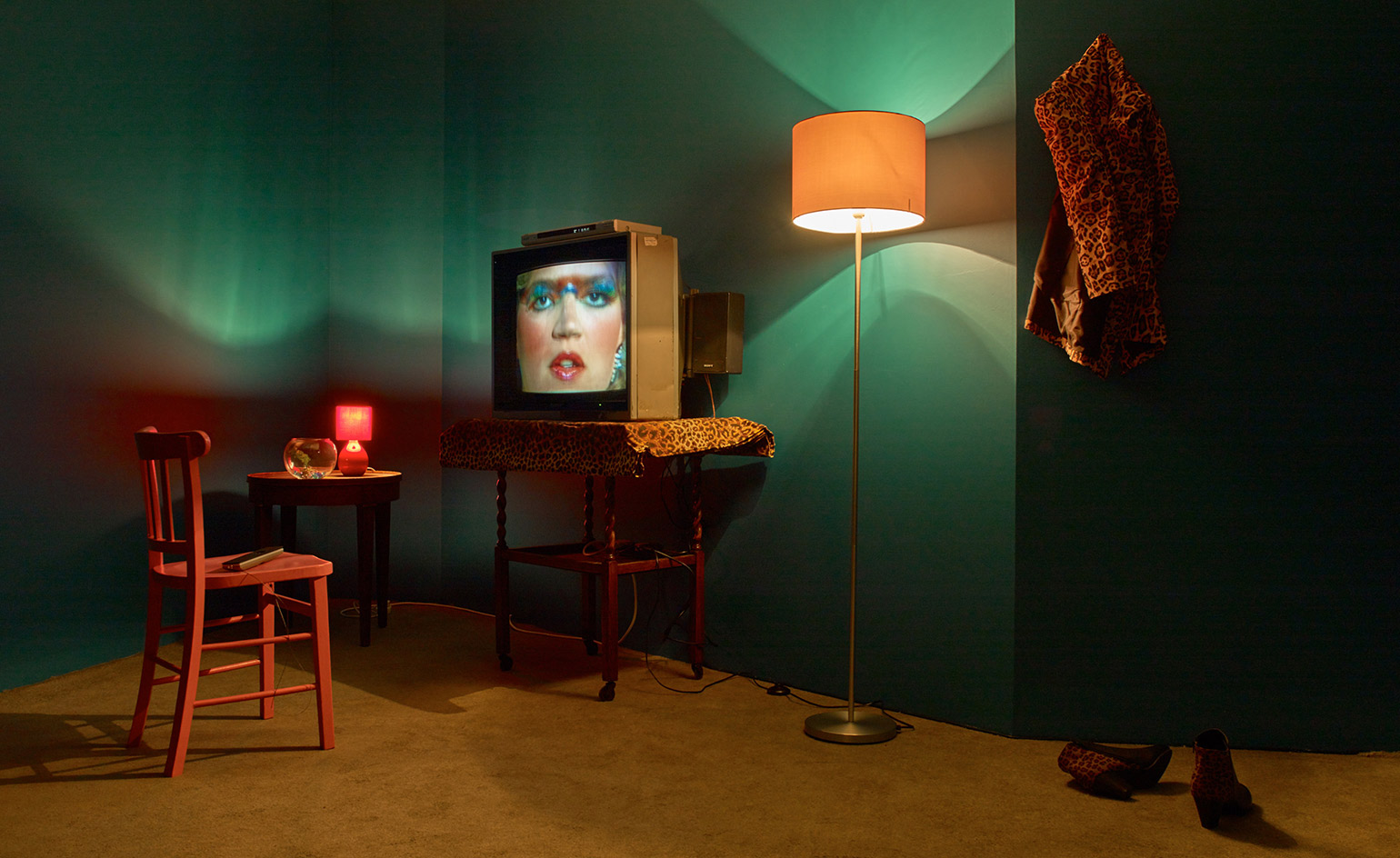
When you think of Internet-based art, your mind might jump to the cutting edge. Although the hyper-modern aspects of multimedia art are displayed in the Whitechapel Gallery's first show of the year, the emphasis is firmly on the medium's rich and rebellious history.
'Electronic Superhighway' takes its name from one of its contributors - South Korean video artist Nam June Paik, who coined the term in 1977. In Paik's Internet Dream – a major video-wall installation of 52 monitors displaying electronically-processed images – blurred, garish colours have a hypnotic effect, showing his early awareness of society's move towards information saturation.
This abundance of data, ironically, could occur in such an ambitious, extensive exhibition. The dizzying array of computer screens, installations and radio static that greets gallery-goers is deliberately overwhelming. To prevent complete over-stimulation, 'Electronic Superhighway' is dispersed over two floors and three different gallery spaces, working backwards chronologically from the present day.
On the ground floor, web art is represented by Amalia Ulman's Excellences Perfections Instagram, a four-month documentary series which examines the influence of social media on attitudes towards the female form. The theme of online identity (or lack thereof) is continued by Douglas Coupland's famously obscured Deep Face - a comment on Facebook's involuntary facial recognition technology.
As visitors make their way up stairs, they journey back to the 1990s. At the top of the staircase, Aristakh Chernyshev's custom LED panel eternally loops the word 'Loading' around in a frustrating circle. This signifies that although visitors are moving upwards, they are regressing into a time when information was not demanded or expected instantaneously.
The second gallery space concentrates on the explosion of the Internet, which brought with it an explosion of browser-based works. Ann Hircsh's Twelve (2013) and Martine Neddam's Mouchette.org (1996) present interactive narratives about vulnerable teenage girl-users. In the latter, fluffy pink pens sit alongside vulgar images on a tablet, with no writing paper in sight.
In the final space, the tone shifts again. Here, the exhibition's pervading sense of foreboding is mingled with some light optimism - the works look forward to a bright-screened future. The 60s and 70s feature boundary-testing artists who pushed early technology to its creative limits. Highlights include the intricate, plotter-based algorithmic work by Manfred Mohr, and the early digital-media design of Frieder Nake.
'Electronic Superhighway' ends at the beginning, with memorabilia from Experiments in Art and Technology (E.A.T) - a series of events that took place in 1960s New York, which showcased artists like John Cage and Robert Rauschenberg. And what better way to end an exhibition about screen-based works, than with a good old-fashioned cabinet of physical artefacts.
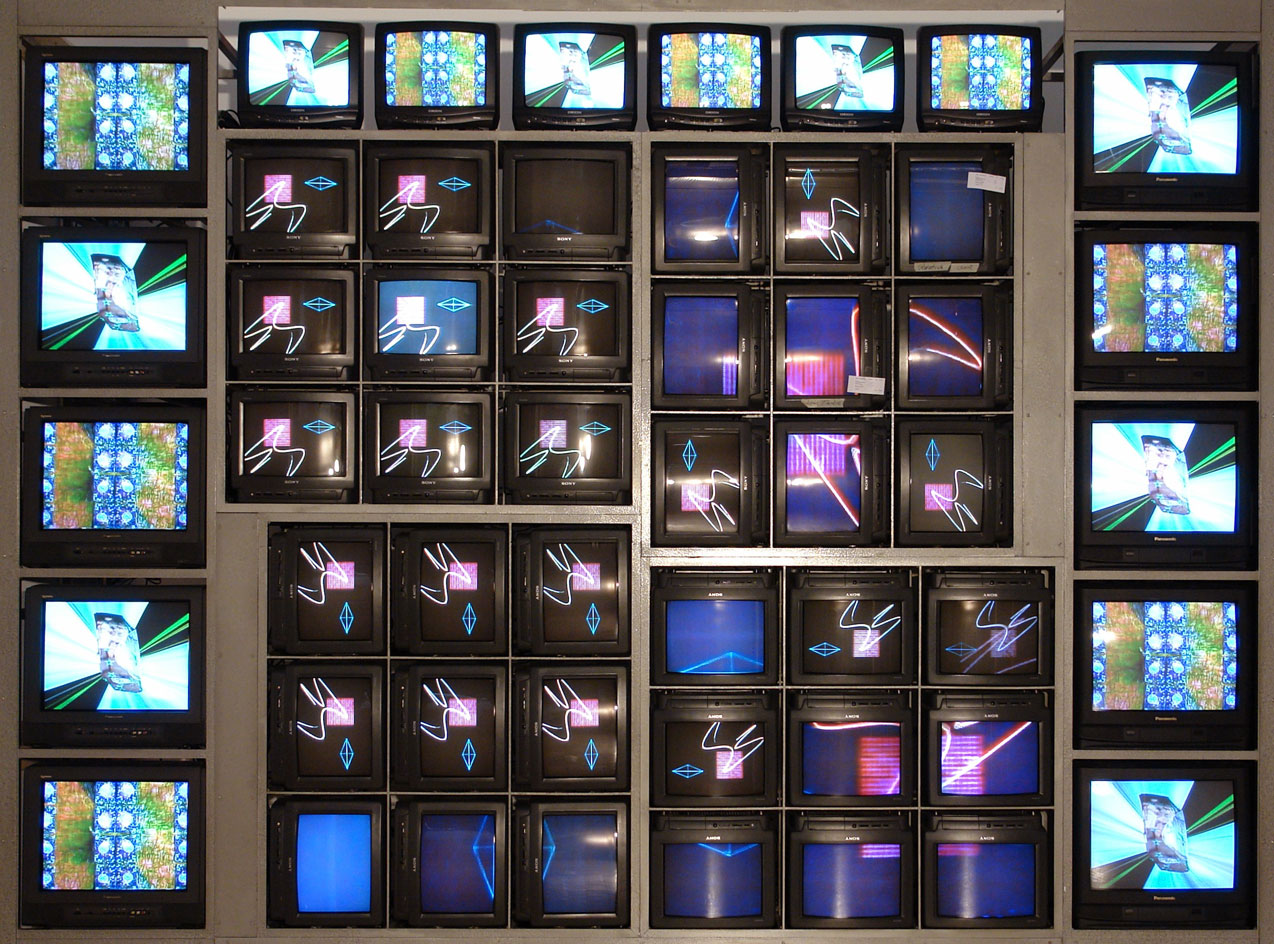
The show takes its name from one of its contributors, South Korean artist Nam June Paik (his Internet Dream, 1994, pictured here), who coined the term in 1977. © ZKM Center for Art and Media Karlsruhe / Nam June Paik Estate.
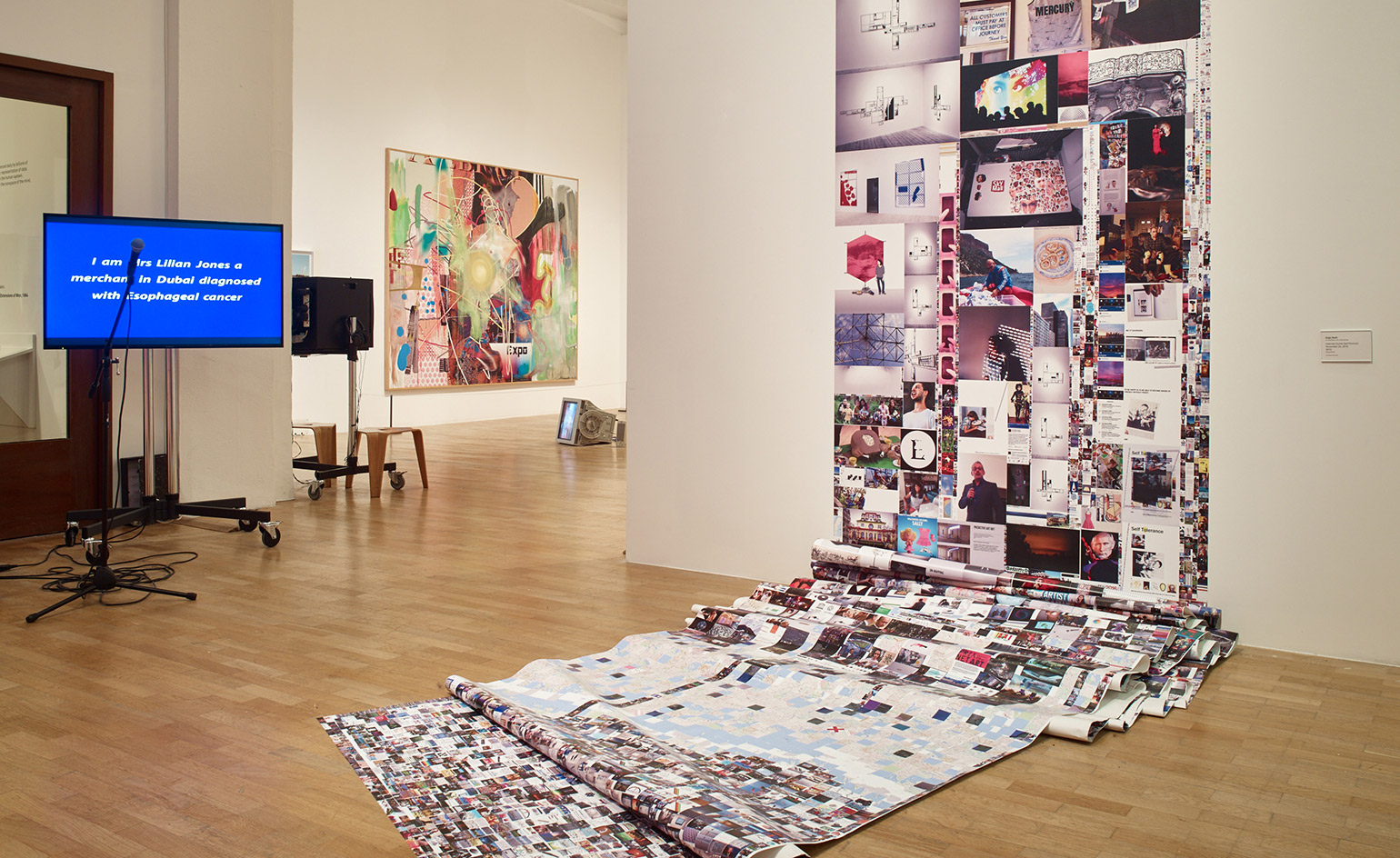
Spread over two floors and three different gallery spaces, the exhibition starts at the present day (pictured) and works backwards to the birth of computer art in 1966. Courtesy of the artist.
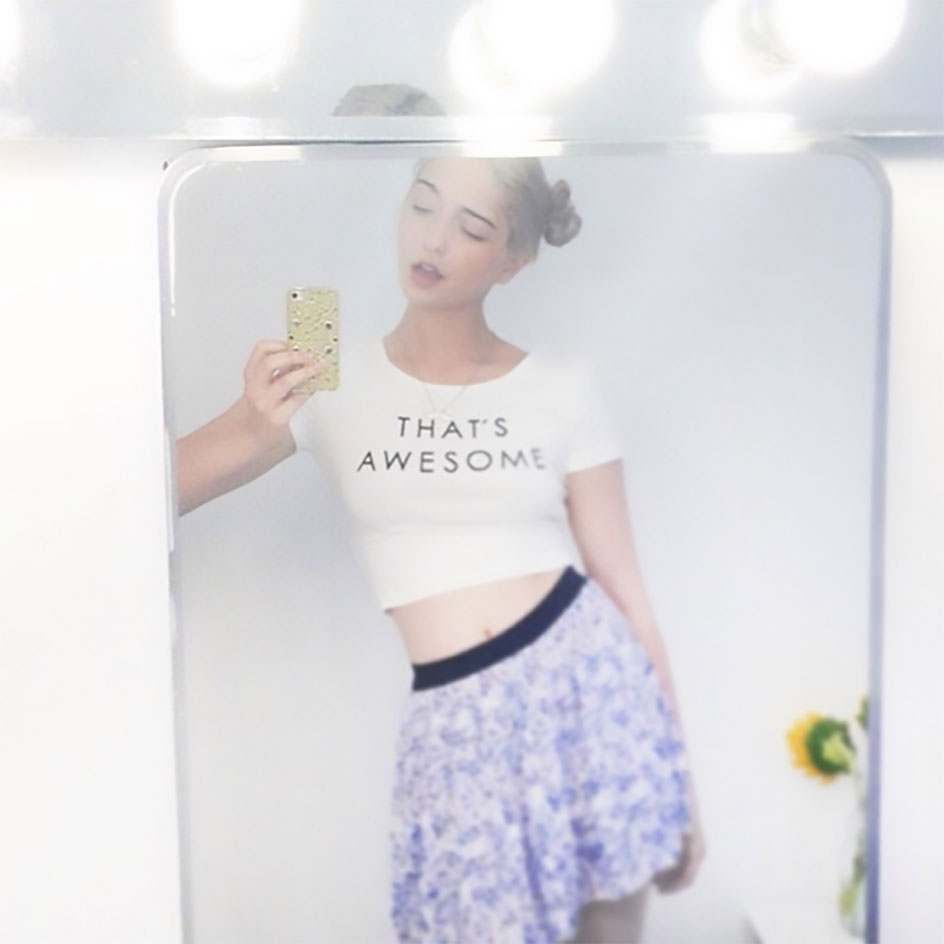
In the first gallery, modern day is represented by enlarged Instagram images by Amalia Ulman.
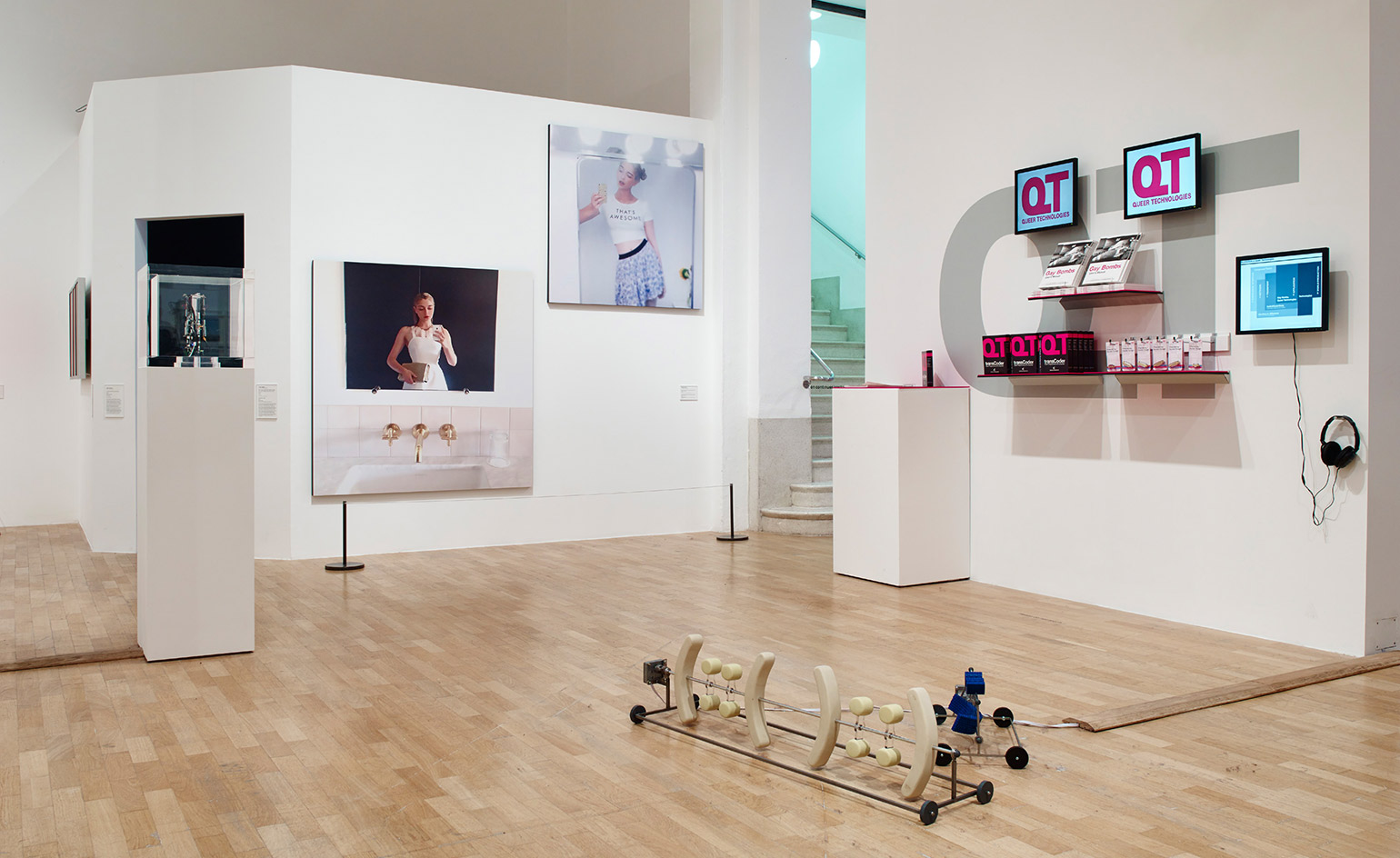
Themes of online identity – or lack thereof – are also presented on this floor. Courtesy of the artist.
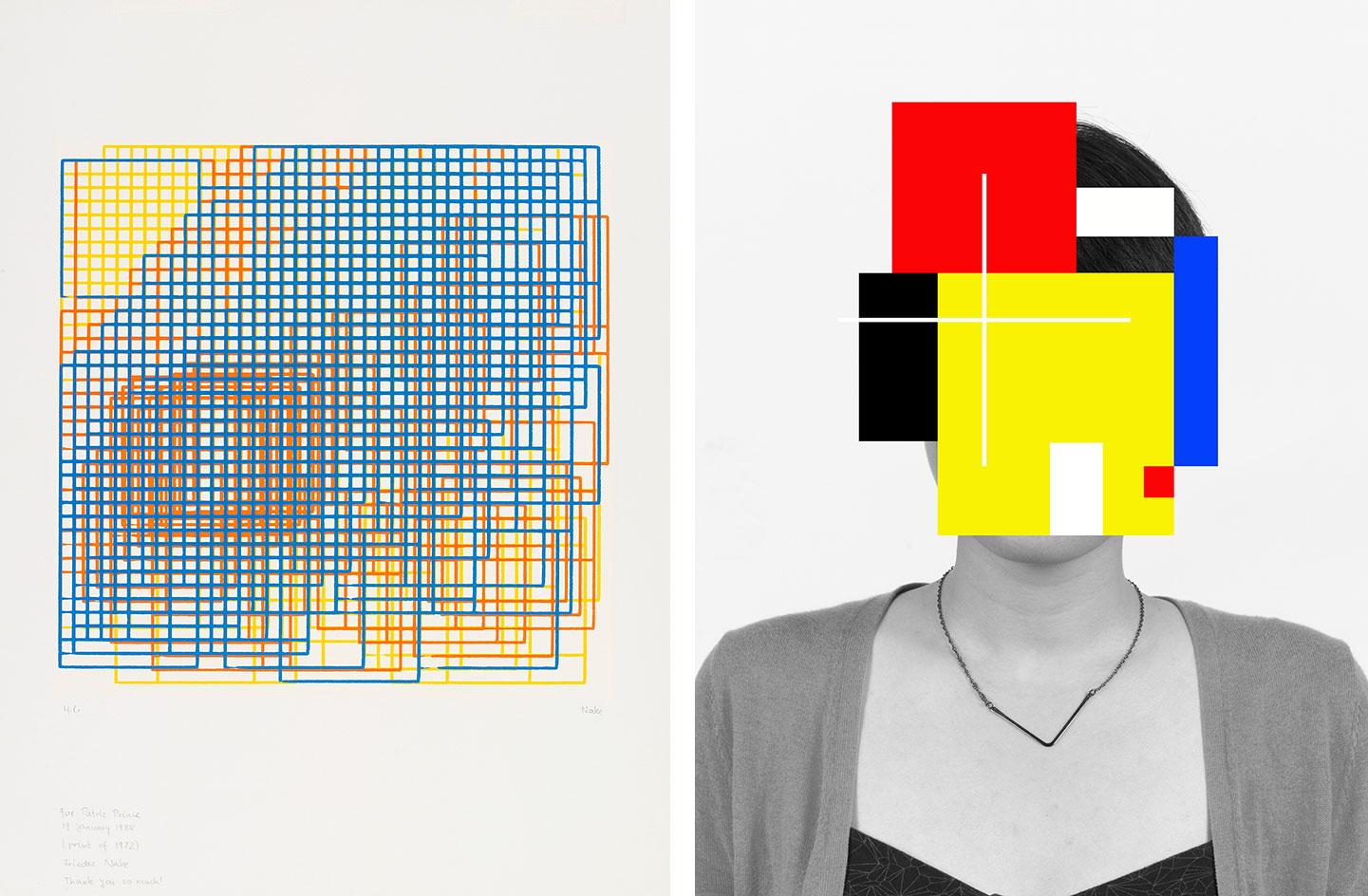
Pictured left: Walk-Through-Raster Vancouver Version, by Frieder Nake, 1972. Right: Deep Face, by Douglas Coupland, 2015.
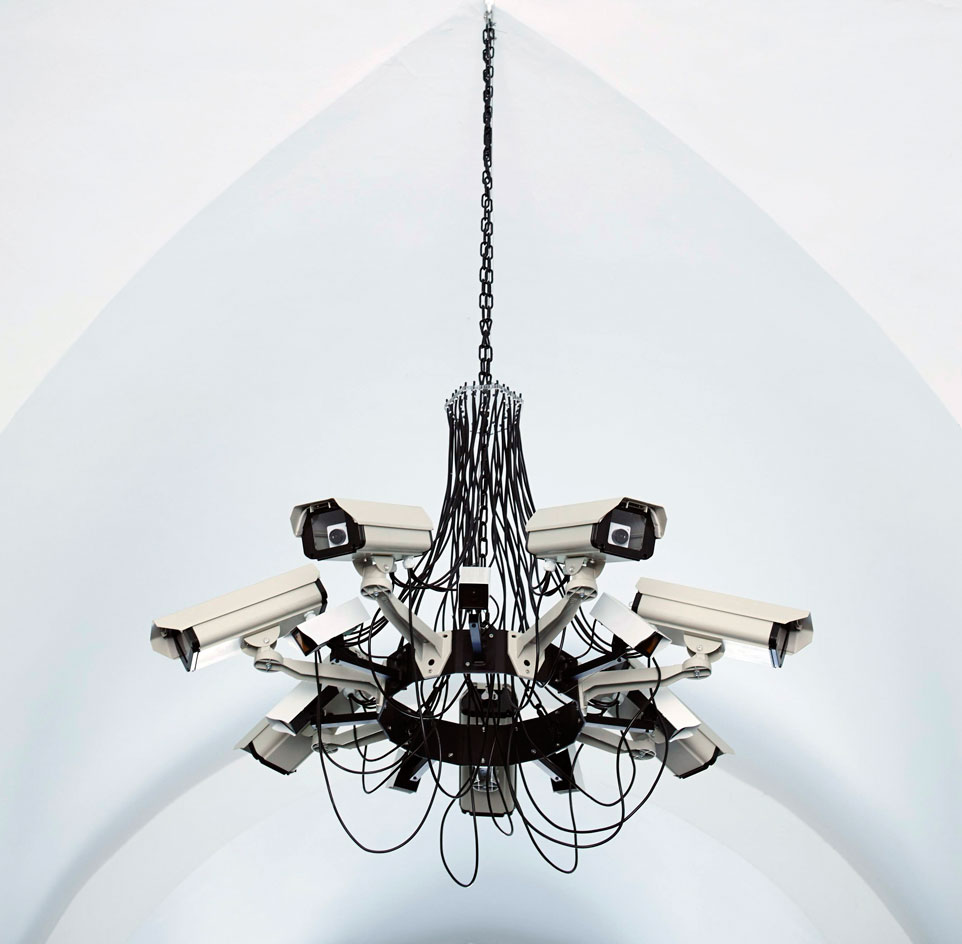
Asymmetric Love, by Addie Wagenknecht, 2013. Courtesy of Bitforms Gallery, New York. © Addie Wagenknecht
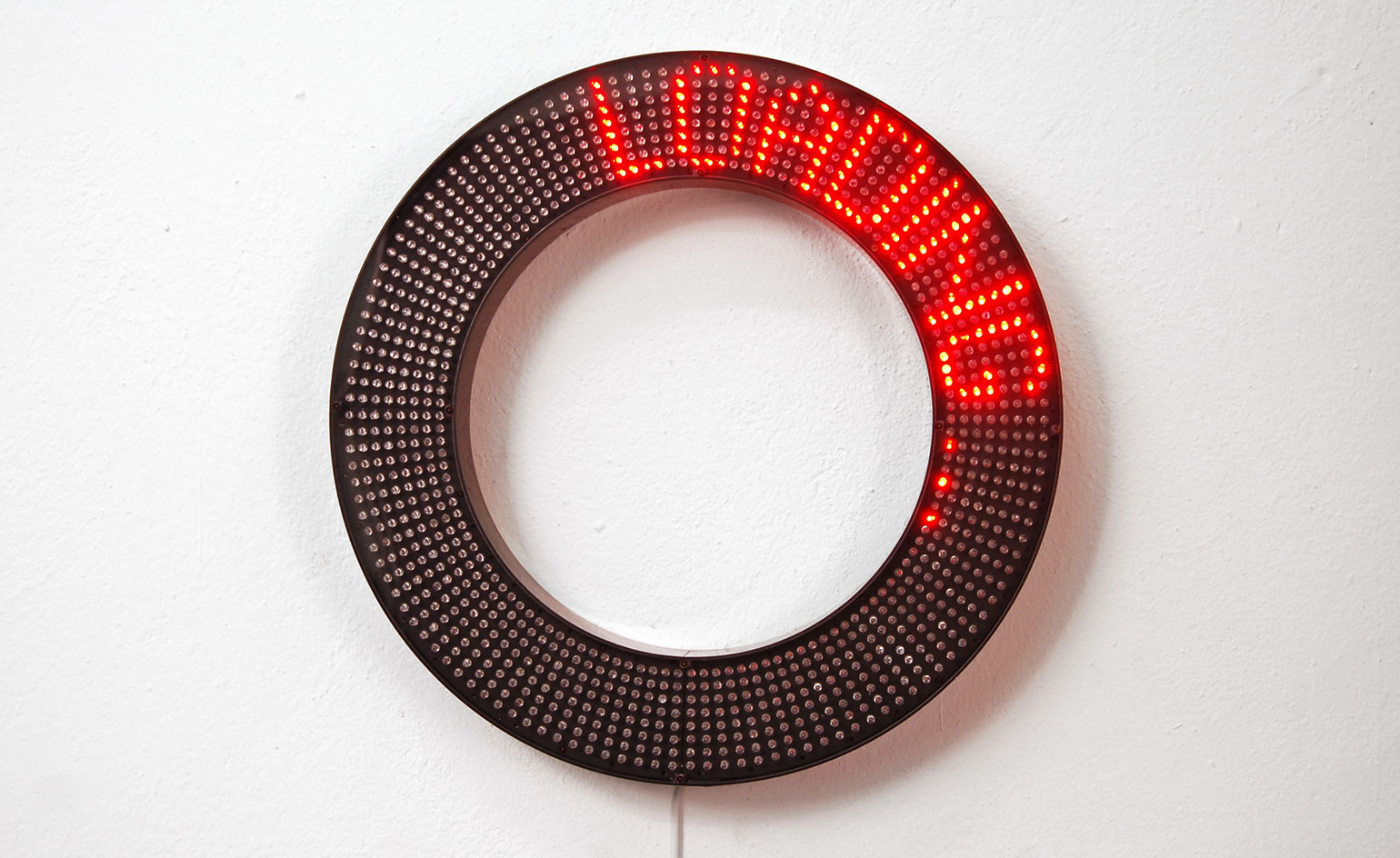
Loading, by Aristarkh Chernyshev, 2007, informs visitors that they are about to step back in time.
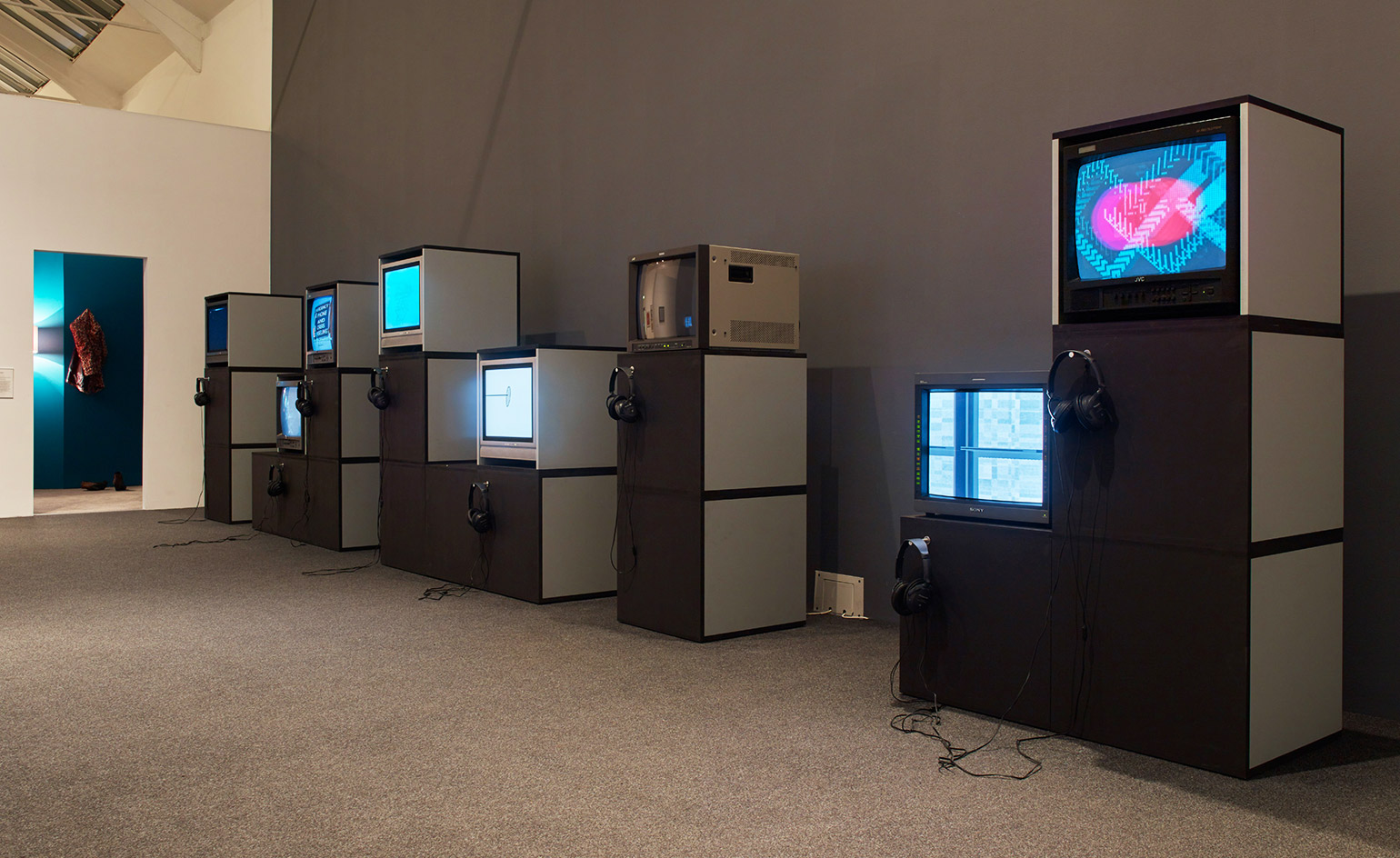
The final space is characterised by earlier, more optimistic works that push the boundaries of artistic technology. Courtesy of the artist.
INFORMATION
’Electronic Superhighways (2016 - 1966)’ runs until 15 May 2016. For more information, visit the Whitechapel Gallery website
ADDRESS
77-82 Whitechapel High St
London E1 7QX
Wallpaper* Newsletter
Receive our daily digest of inspiration, escapism and design stories from around the world direct to your inbox.
Elly Parsons is the Digital Editor of Wallpaper*, where she oversees Wallpaper.com and its social platforms. She has been with the brand since 2015 in various roles, spending time as digital writer – specialising in art, technology and contemporary culture – and as deputy digital editor. She was shortlisted for a PPA Award in 2017, has written extensively for many publications, and has contributed to three books. She is a guest lecturer in digital journalism at Goldsmiths University, London, where she also holds a masters degree in creative writing. Now, her main areas of expertise include content strategy, audience engagement, and social media.
-
 The Lighthouse draws on Bauhaus principles to create a new-era workspace campus
The Lighthouse draws on Bauhaus principles to create a new-era workspace campusThe Lighthouse, a Los Angeles office space by Warkentin Associates, brings together Bauhaus, brutalism and contemporary workspace design trends
By Ellie Stathaki
-
 Extreme Cashmere reimagines retail with its new Amsterdam store: ‘You want to take your shoes off and stay’
Extreme Cashmere reimagines retail with its new Amsterdam store: ‘You want to take your shoes off and stay’Wallpaper* takes a tour of Extreme Cashmere’s new Amsterdam store, a space which reflects the label’s famed hospitality and unconventional approach to knitwear
By Jack Moss
-
 Titanium watches are strong, light and enduring: here are some of the best
Titanium watches are strong, light and enduring: here are some of the bestBrands including Bremont, Christopher Ward and Grand Seiko are exploring the possibilities of titanium watches
By Chris Hall
-
 The UK AIDS Memorial Quilt will be shown at Tate Modern
The UK AIDS Memorial Quilt will be shown at Tate ModernThe 42-panel quilt, which commemorates those affected by HIV and AIDS, will be displayed in Tate Modern’s Turbine Hall in June 2025
By Anna Solomon
-
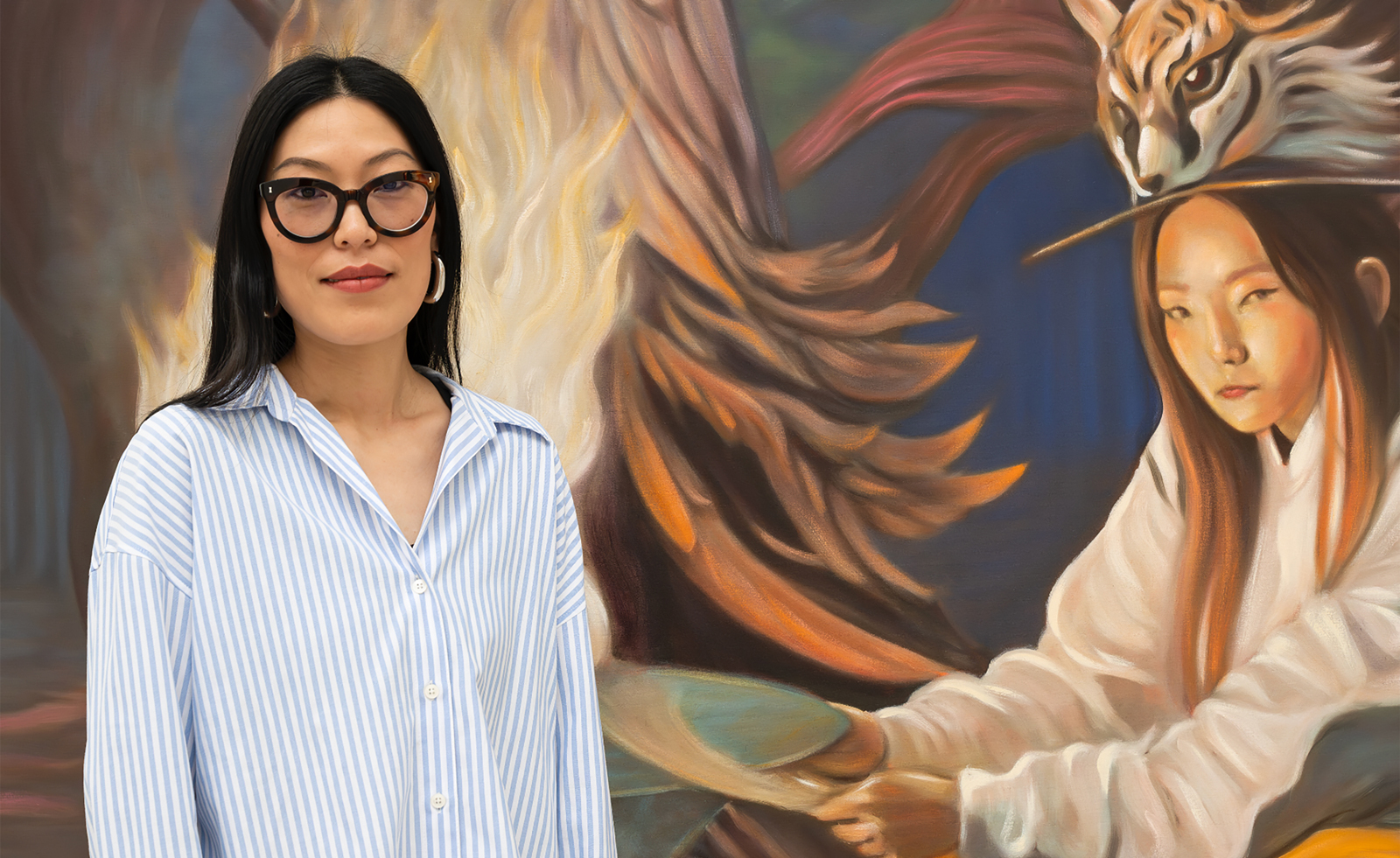 Meet the Turner Prize 2025 shortlisted artists
Meet the Turner Prize 2025 shortlisted artistsNnena Kalu, Rene Matić, Mohammed Sami and Zadie Xa are in the running for the Turner Prize 2025 – here they are with their work
By Hannah Silver
-
 ‘Humour is foundational’: artist Ella Kruglyanskaya on painting as a ‘highly questionable’ pursuit
‘Humour is foundational’: artist Ella Kruglyanskaya on painting as a ‘highly questionable’ pursuitElla Kruglyanskaya’s exhibition, ‘Shadows’ at Thomas Dane Gallery, is the first in a series of three this year, with openings in Basel and New York to follow
By Hannah Silver
-
 The art of the textile label: how British mill-made cloth sold itself to Indian buyers
The art of the textile label: how British mill-made cloth sold itself to Indian buyersAn exhibition of Indo-British textile labels at the Museum of Art & Photography (MAP) in Bengaluru is a journey through colonial desire and the design of mass persuasion
By Aastha D
-
 Artist Qualeasha Wood explores the digital glitch to weave stories of the Black female experience
Artist Qualeasha Wood explores the digital glitch to weave stories of the Black female experienceIn ‘Malware’, her new London exhibition at Pippy Houldsworth Gallery, the American artist’s tapestries, tuftings and videos delve into the world of internet malfunction
By Hannah Silver
-
 Ed Atkins confronts death at Tate Britain
Ed Atkins confronts death at Tate BritainIn his new London exhibition, the artist prods at the limits of existence through digital and physical works, including a film starring Toby Jones
By Emily Steer
-
 Tom Wesselmann’s 'Up Close' and the anatomy of desire
Tom Wesselmann’s 'Up Close' and the anatomy of desireIn a new exhibition currently on show at Almine Rech in London, Tom Wesselmann challenges the limits of figurative painting
By Sam Moore
-
 A major Frida Kahlo exhibition is coming to the Tate Modern next year
A major Frida Kahlo exhibition is coming to the Tate Modern next yearTate’s 2026 programme includes 'Frida: The Making of an Icon', which will trace the professional and personal life of countercultural figurehead Frida Kahlo
By Anna Solomon